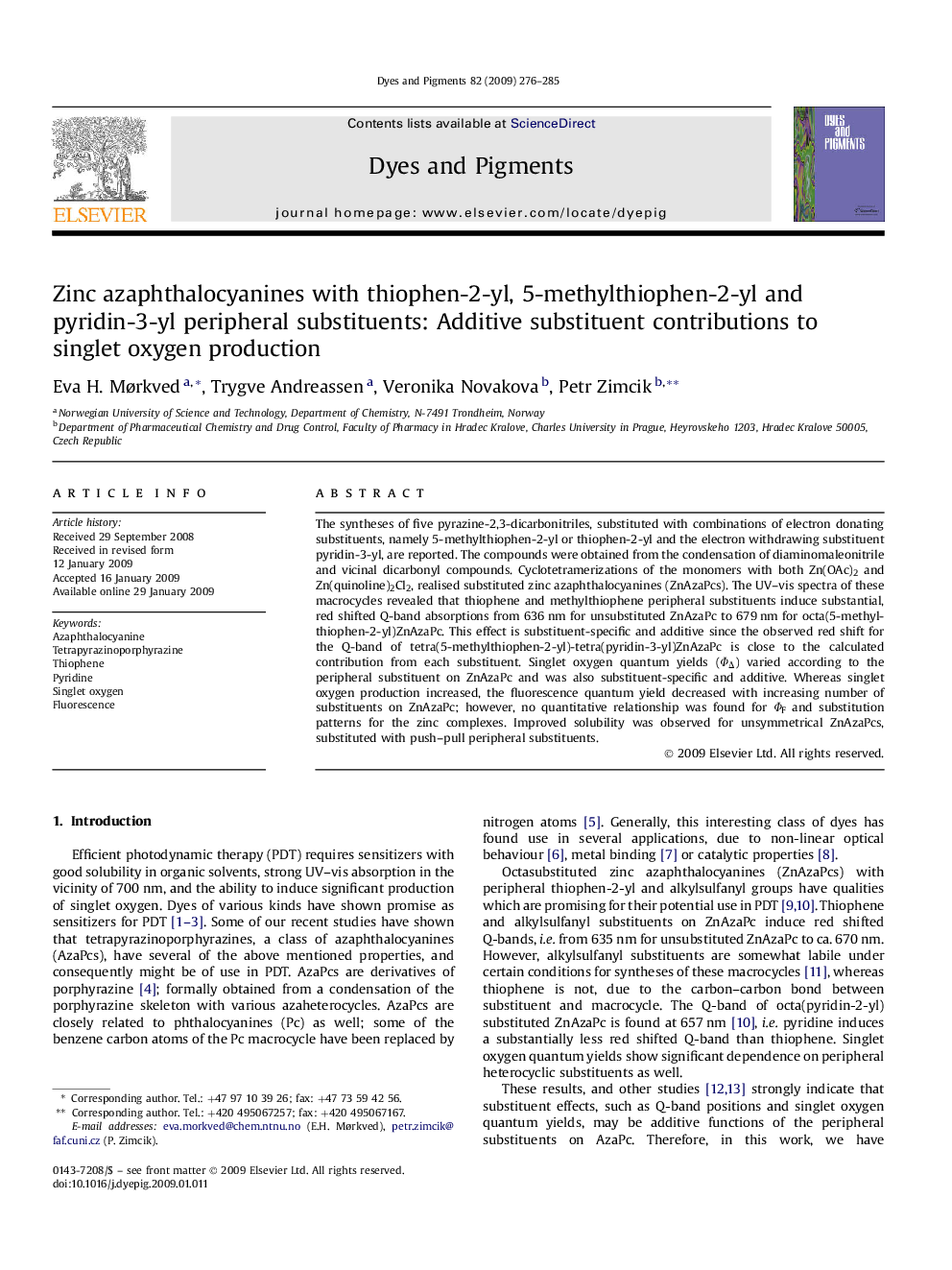| Article ID | Journal | Published Year | Pages | File Type |
|---|---|---|---|---|
| 177902 | Dyes and Pigments | 2009 | 10 Pages |
The syntheses of five pyrazine-2,3-dicarbonitriles, substituted with combinations of electron donating substituents, namely 5-methylthiophen-2-yl or thiophen-2-yl and the electron withdrawing substituent pyridin-3-yl, are reported. The compounds were obtained from the condensation of diaminomaleonitrile and vicinal dicarbonyl compounds. Cyclotetramerizations of the monomers with both Zn(OAc)2 and Zn(quinoline)2Cl2, realised substituted zinc azaphthalocyanines (ZnAzaPcs). The UV–vis spectra of these macrocycles revealed that thiophene and methylthiophene peripheral substituents induce substantial, red shifted Q-band absorptions from 636 nm for unsubstituted ZnAzaPc to 679 nm for octa(5-methylthiophen-2-yl)ZnAzaPc. This effect is substituent-specific and additive since the observed red shift for the Q-band of tetra(5-methylthiophen-2-yl)-tetra(pyridin-3-yl)ZnAzaPc is close to the calculated contribution from each substituent. Singlet oxygen quantum yields (ΦΔ) varied according to the peripheral substituent on ZnAzaPc and was also substituent-specific and additive. Whereas singlet oxygen production increased, the fluorescence quantum yield decreased with increasing number of substituents on ZnAzaPc; however, no quantitative relationship was found for ΦF and substitution patterns for the zinc complexes. Improved solubility was observed for unsymmetrical ZnAzaPcs, substituted with push–pull peripheral substituents.
